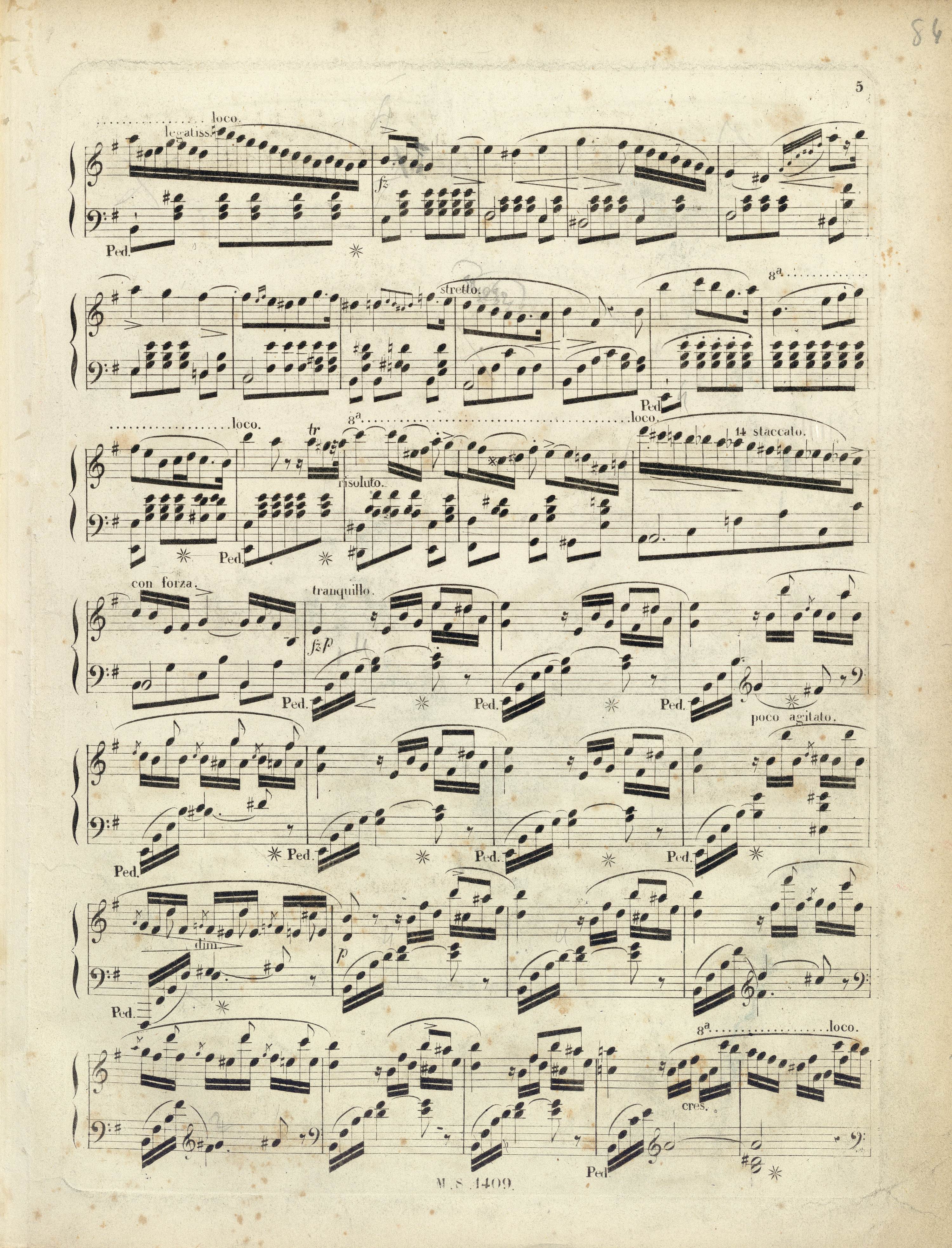




|
Semiquavers b1-a1 in FE, literal reading |
|

|
Semiquavers b1-a1 in FE, contextual interpretation |
|

|
Demisemiquavers b1-a1 in GE |
|

|
Semiquaver a1 in EE |
|

|
Semiquavers a1-g1 in FED |
Different source versions of the figure filling the 1st beat of the bar pose a considerable editorial problem – the issue of the authenticity of particular versions is unclear, whereas in the case of FE – also the very interpretation of the erroneously written rhythm.
The mistake in FE, an edition based on an autograph and proofread by Chopin at least twice, can be generally explained in two ways:
- As a wrongly implemented – unfinished – proofreading. The alignment of the notes in the R.H. with respect to the quavers in the L.H., which was not probably changed in print, since such an operation would have almost certainly left visible traces, suggests the dot extending the b1 quaver as an element added in the hypothetical proofreading. What could be the aim of such a proofreading? In other words, what was not done? Based on the visible elements of the notation only, we see two possibilities – a beam was not added, shortening the 2nd and 3rd notes, which would result in the version of GE, or the second b1 was not removed, which would have led to the version of EE. At the same time, each of these versions may be considered to be potentially intended by Chopin.
- As a mistake of the engraver, overlooked at the time of proofreading, resulting from, e.g. deletions in the autograph, hampering the correct interpretation of the text. Due to certain reasons, this possibility is more likely:
- unfinished or simply erroneous corrections were quite frequent, but the majority of them would result in the correct text. Therefore, the simplest explanation of the edition's mistake is a mistake or misunderstanding of the base text;
- correction in print; such corrections would rarely leave visible traces, particularly in Schlesinger's editions – cf. e.g. bar 34 or 143. The absence of traces in the discussed place significantly reduces the likelihood of alterations.
The natural candidate for the erroneous element is the dot extending the b1 note. We consider the version resulting from its removal, compliant with the alignment of the text, to be the most likely interpretation of the notation of FE.
The versions of GE and EE, although theoretically one of them could correspond to Chopin's intention, are most probably revisions, aiming at correcting the mistake of FE, assuming the correctness of the dot extending b1. In the case of EE, the reviser was most probably Fontana, who could have remembered this place from Chopin's performance; however, there is no evidence to back that up. Cf. examples of rhythmic errors and their revisions in the Concerto in F minor, op. 21, the 2nd mov., bar 6 and 8.
The above analyses concerned the rhythm only. We still have to discuss the version of FED, in which, apart from the correction of the rhythmic error – to the rhythm adopted by us – the pitch of the 2nd and 3rd notes was changed from b1-a1 to a1-g1. It could be regarded as a later alternative version with respect to the printed text (variant) – thus, Chopin would have abandoned the idea of differentiating this bar with respect to analogous bar 517. Such situations, in which the initial version was then propagated to its further occurrences are known in Chopin's output, e.g. in the Polonaise in C minor, op. 40, no. 2, bar 7, 23 and 60 (version with g1 of the 1st chord in the R.H.). However, according to us, like in the case of rhythm, the change of pitch is probably a correction of a mistake. Chopin would have initially had different ideas for the shape of this motif, which resulted in corrections and deletions in [A]. Their final result would be the version of bar 517, in which its interpretation did not cause problems; however, in the discussed bar, the notation turned out to be unclear.
Therefore, in the main text we give the version of FED, corrected during a lesson with Chopin both rhythmically and melodically.
Compare the passage in the sources »
category imprint: Interpretations within context; Differences between sources
issues: Annotations in teaching copies, EE revisions, Errors in FE, Annotations in FED, GE revisions, Rhythmic errors
notation: Rhythm

